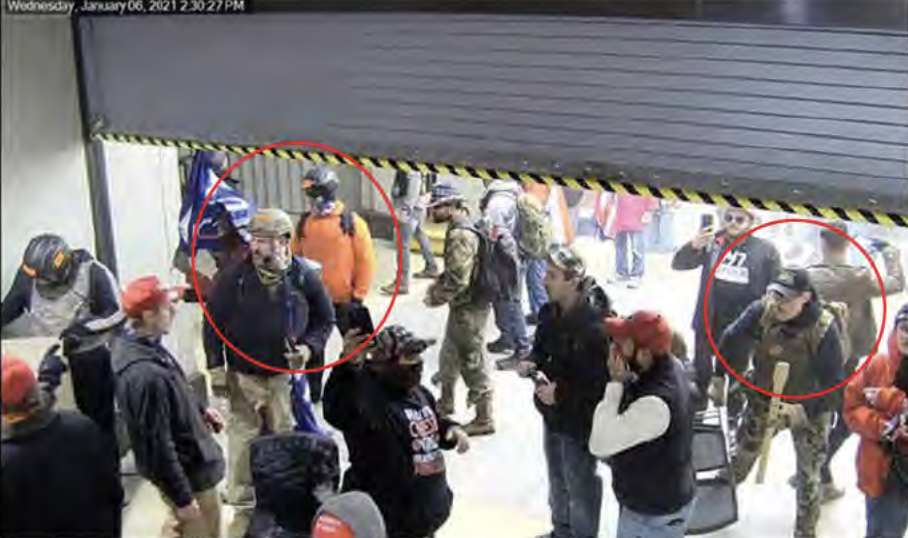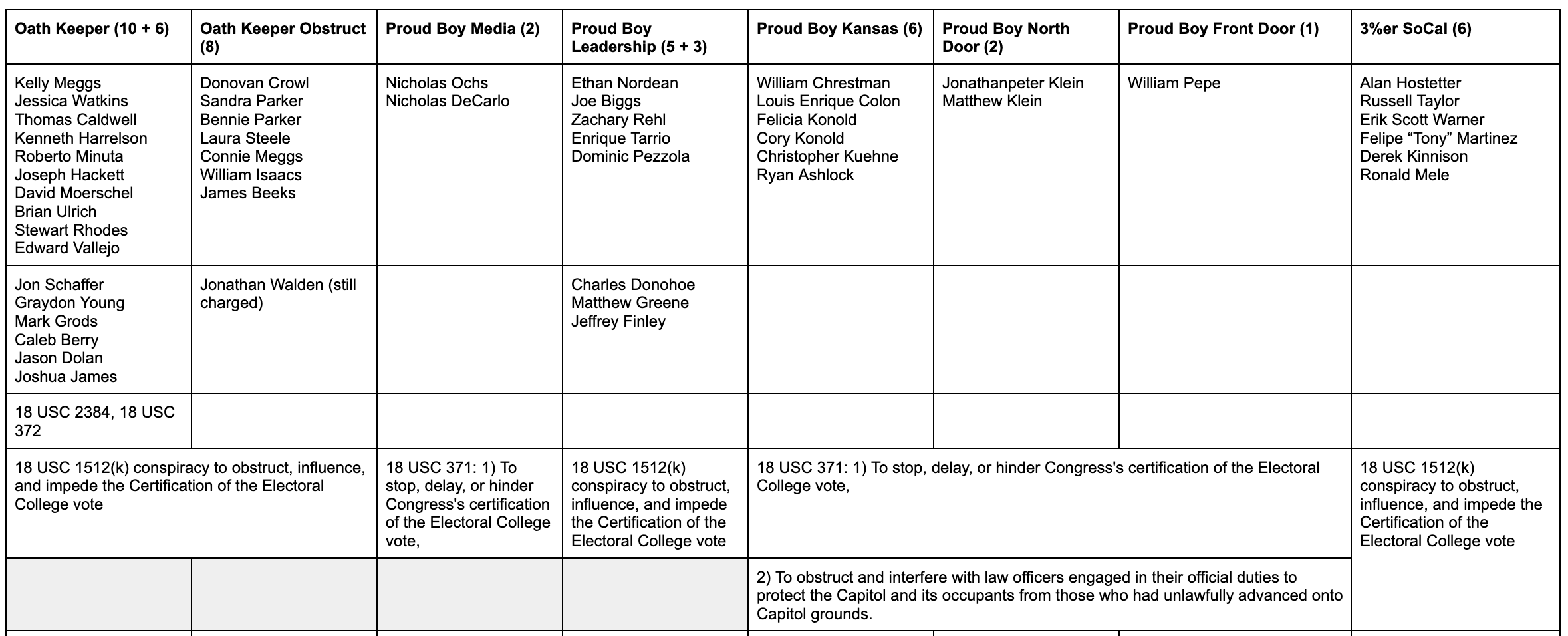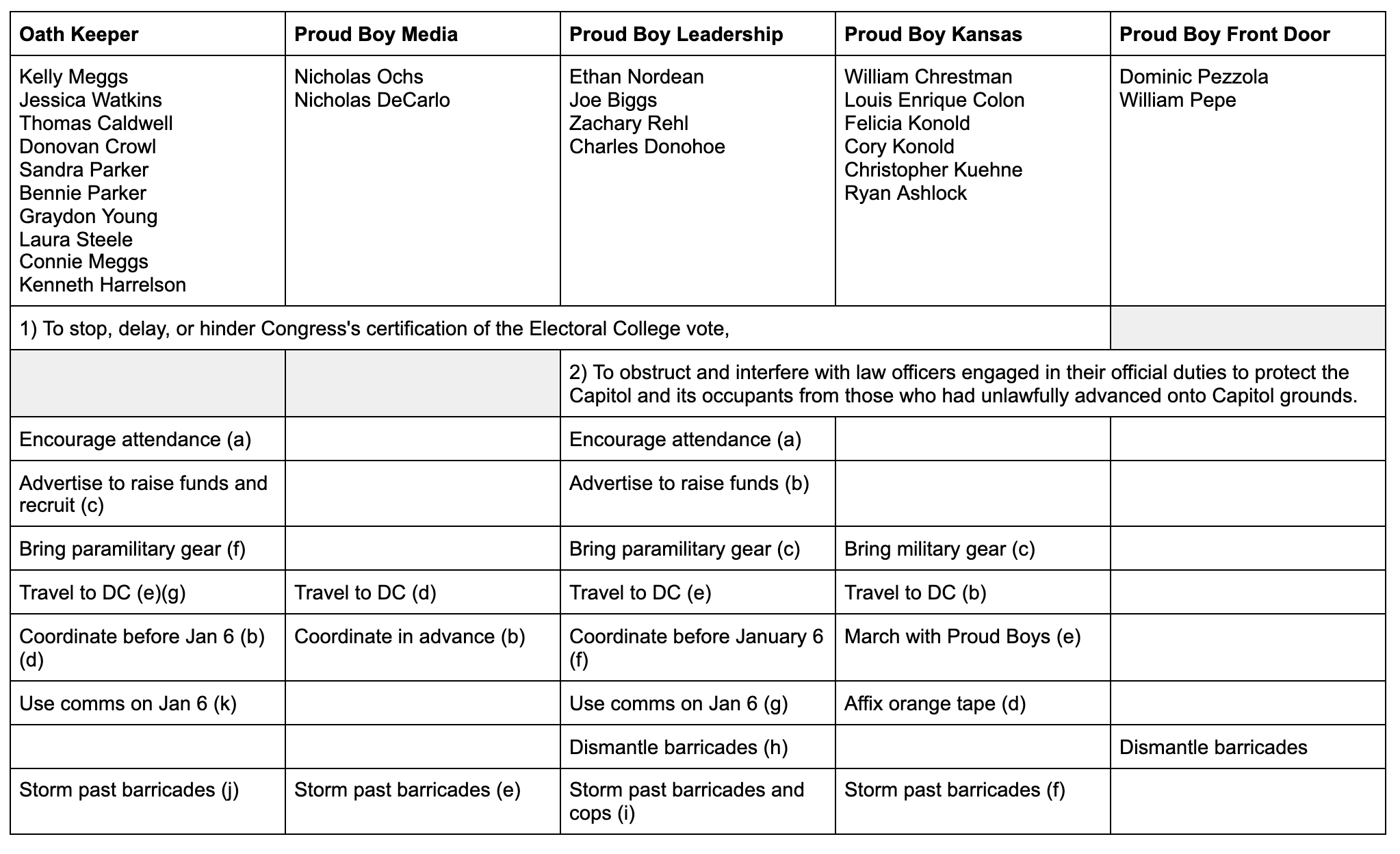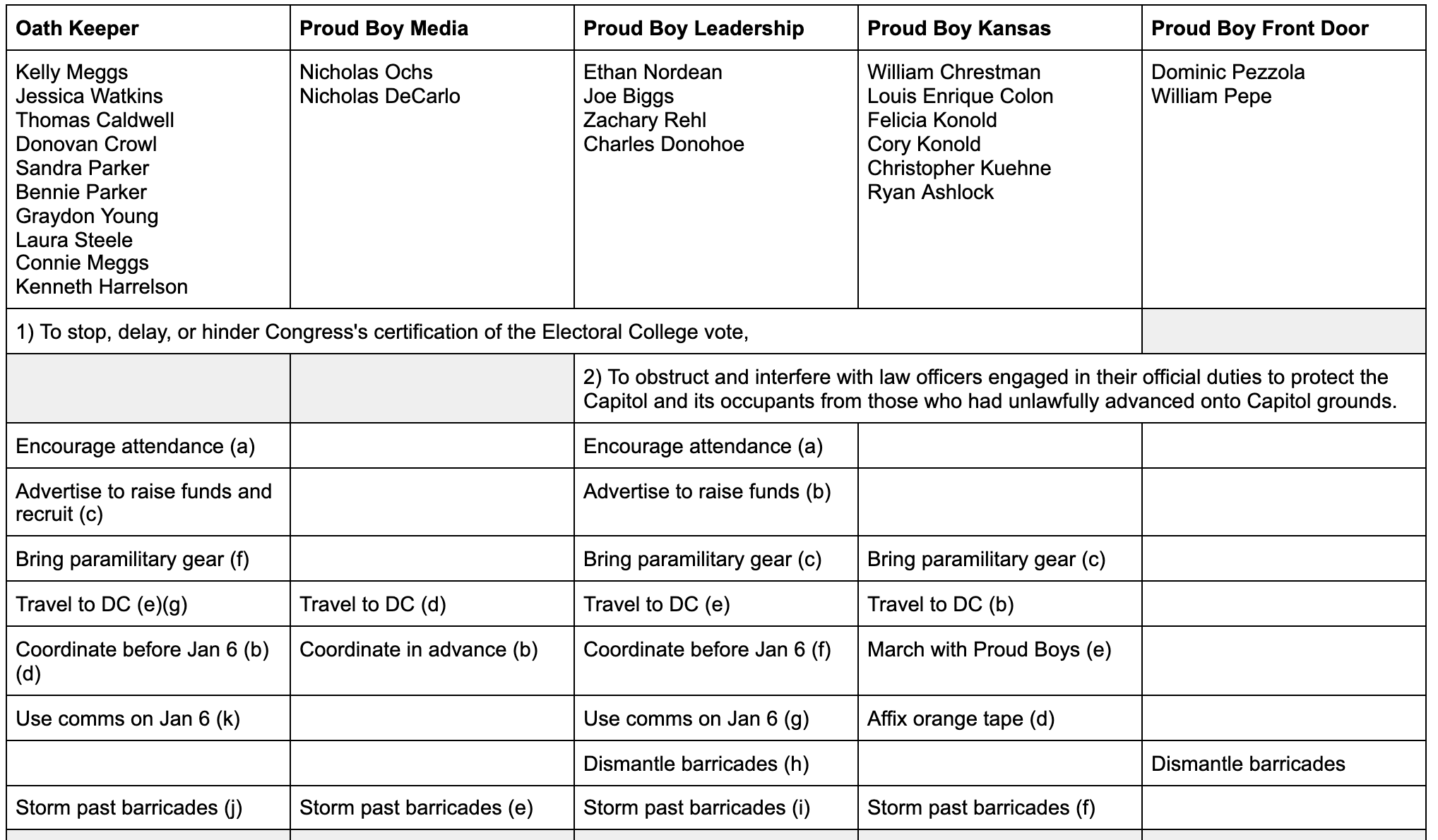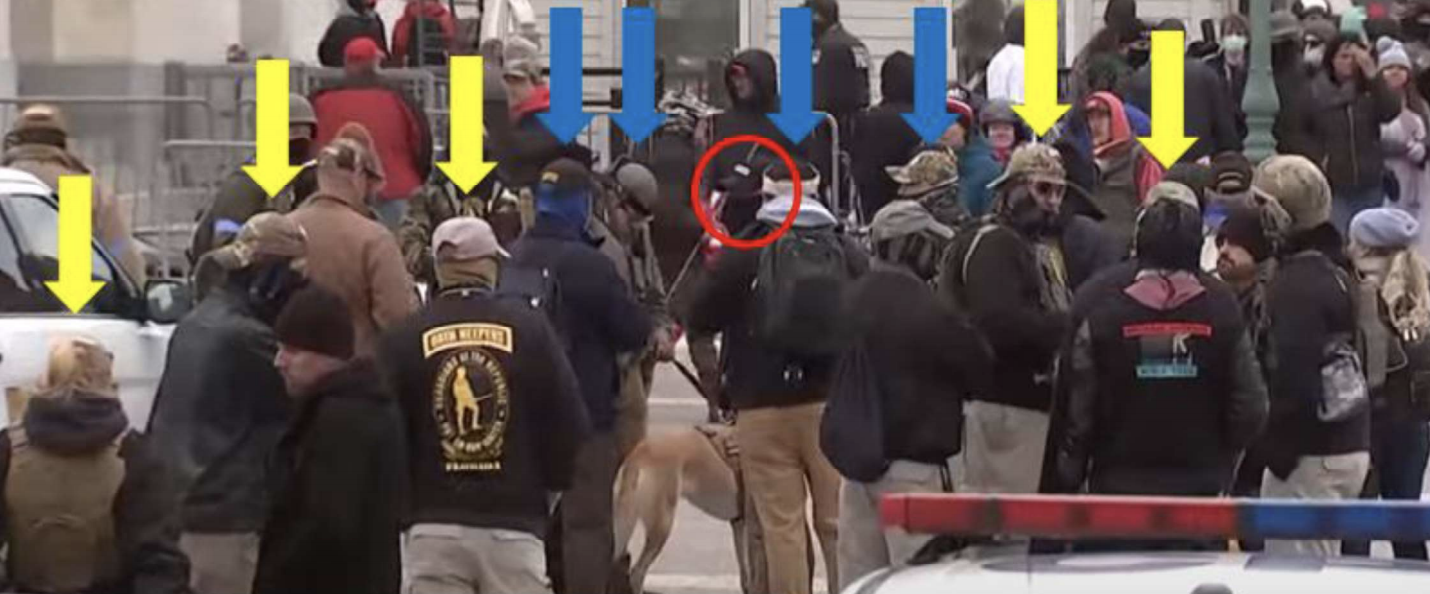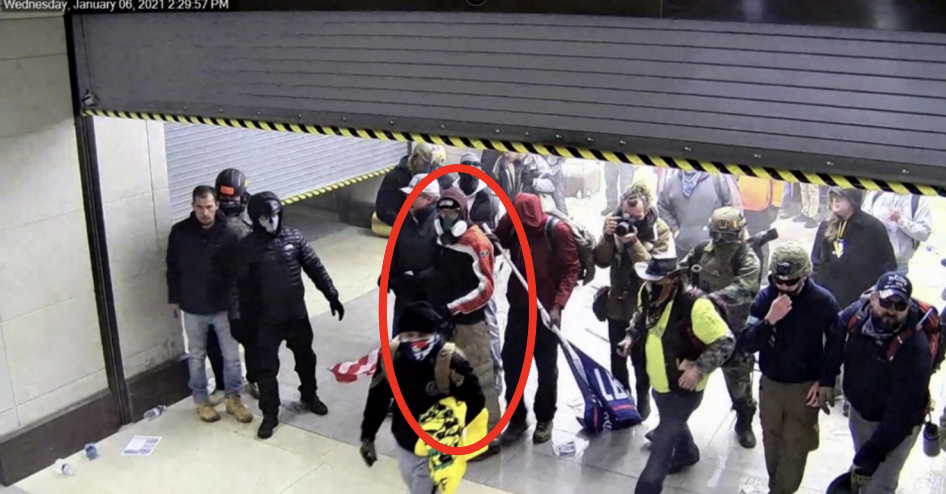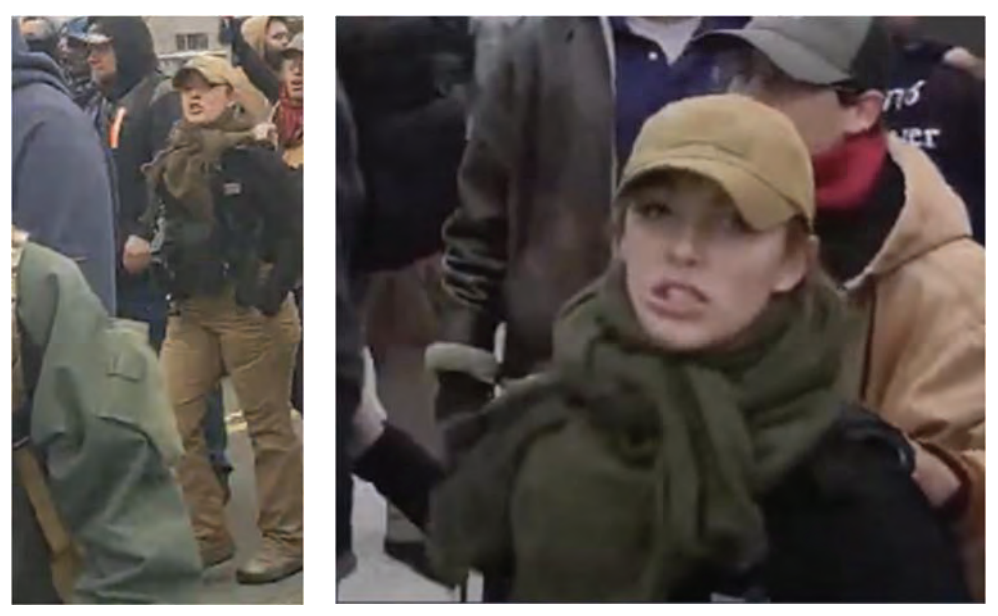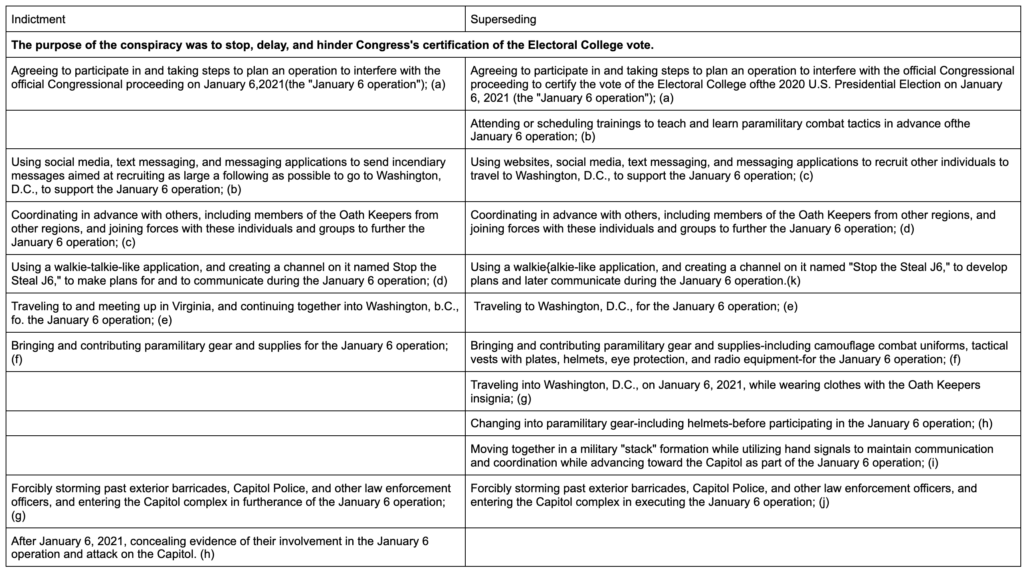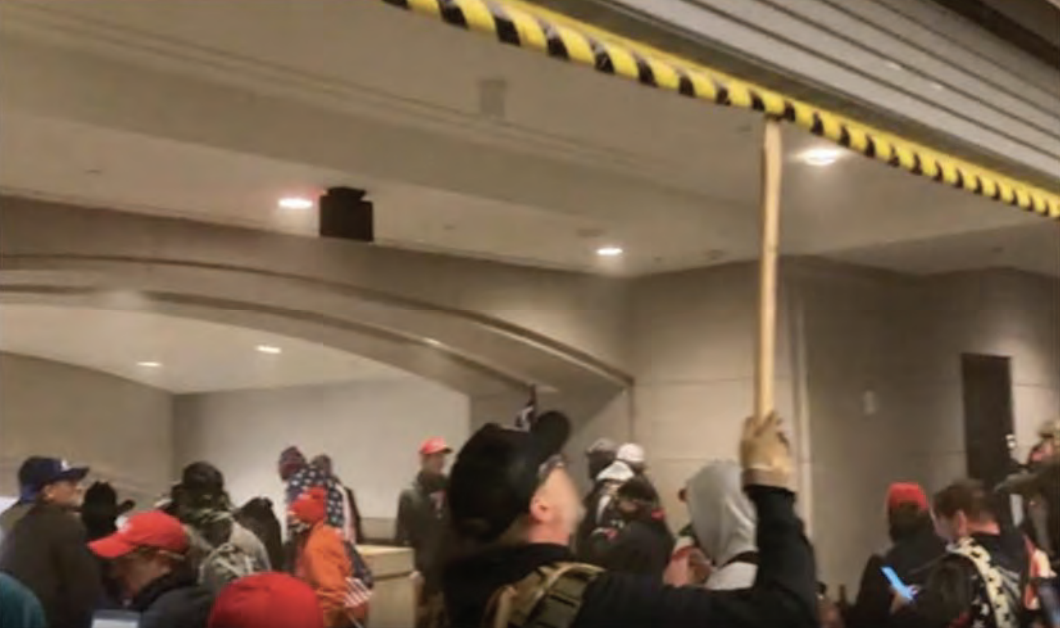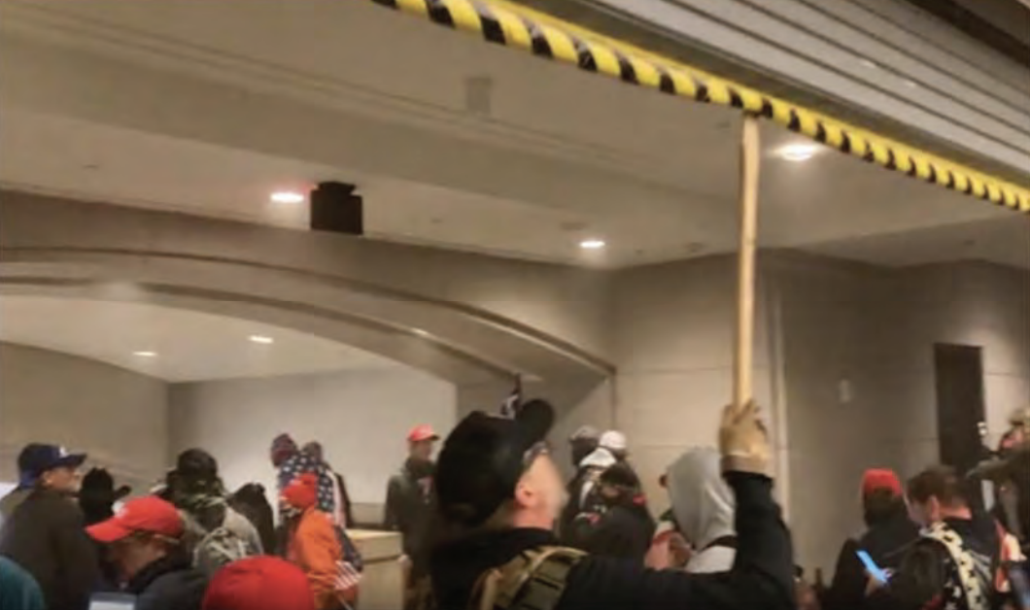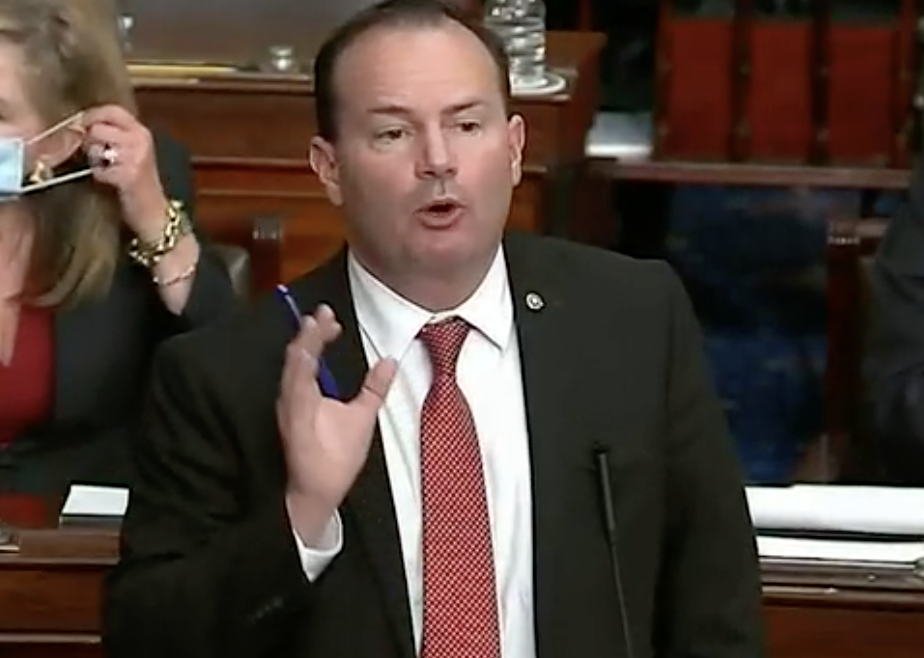The Tactics of the Louis Enrique Colon Cooperation Agreement
As Capitol Police attempted to lower a barricade protecting the tunnels of the Capitol on January 6, Proud Boy Louis Enrique Colon reached out and prevented it from closing, then placed a chair to further obstruct the gate.
While inside the Capitol building, defendant observed co-defendants Chrestman, Felicia Konold, and Cory Konold at various points inside of the building, including in a downstairs area of the Capitol near where several retractable doors were being lowered by police officers in an attempt to stop rioters from proceeding further into a portion of the building. To prevent one of the doors from closing, defendant used his hands to stop the door and placed a chair in the door’s path, while co-defendant Kuehne and another individual placed a podium in the path of another door.
That’s the basis of the single charge to which Colon pled guilty as part of a cooperation agreement yesterday, 18 USC 231, Civil Disorder.
Defendant knowingly obstructed, impeded, and interfered with law enforcement officers while those officers were lawfully engaged in their official duties incident to a civil disorder that was occurring inside of the Capitol. Among other things, defendant prevented officers from closing a retractable door which was intended to prevent rioters from advancing further into a portion of the restricted Capitol building.
In my opinion, this is, by any measure, the most lenient overt plea deal a January 6 defendant has gotten (and a comment that one of the lawyers in the plea hearing yesterday made suggested that it had recently been sweetened). On top of this charge and trespassing, Colon was originally charged in a conspiracy with other members of the Kansas City Proud Boys, as well as individually with obstruction. With credit for cooperation, according to his plea deal, the former cop may avoid any prison time.
That’s all the more remarkable given that Colon’s statement of offense reveals that he went to the Capitol with a pocket knife and an axe handle.
Among other things, defendant purchased and modified an axe handle to be used as both a walking stick and an improvised weapon
[snip]
Defendant and the group ultimately made their way to the west side of the Capitol’s grounds, outside of the restricted, fenced-off perimeter which had barricades staffed by USCP officers. At the time, defendant was wearing a backpack, pocket knife, tactical vest, tactical gloves, boots, and a helmet adorned with orange tape.
While the knife may be too short to trigger enhancements, carrying an acknowledged weapon has been used to enhance the penalties of others, though it is also the kind of thing prosecutors have used to flip people.
In other words, either Colon’s cooperation is so valuable, or DOJ needed it so badly, that he got a really sweet plea deal even in spite of bringing an “improvised weapon.”
So I’d like to discuss what DOJ may be doing tactically.
First, some background. The Oath Keepers investigation has been marked by a relentless march of new cooperators, publicly unveiled: Jon Schaffer, Graydon Young, Mark Grods, Caleb Berry, Jason Dolan, Joshua James. Boom. Boom. Boom. Boom. By contrast, just two of the overt Proud Boy cooperators have the kind of plea deal that implicates the wider conspiracy, Matthew Greene and Charles Donohoe. For whatever reason — apparently thinner staffing, greater numbers of participants, difficulties created by Enrique Tarrio’s arrest and delayed phone exploitation, investigative equities, corrupt lenient treatment, or a more important role in the overall investigation — DOJ has been using different tactics to get cooperation from Proud Boys and other key far right personalities. As an example, Jeff Finley (like Brandon Straka and likely, soon, Baked Alaska) seems to have cooperated in advance to avoid a felony altogether. So did Jeremy Grace, though his statement of offense implicated his far more complicit father who, if he ever cooperated, might implicate far more important tactical players. Ricky Willden’s statement of offense barely hints at what he knew that day.
Particularly given a reference made to Colon “continu[ing]” his cooperation in the hearing yesterday, this feels more like the kind of deal Finley got, where someone works their way out of more serious charges (which in Colon’s case would be obstruction with a weapons enhancement) ahead of time. That kind of cooperation makes it less visible, but also may make testimony harder to impeach down the road.
With that in mind, I’d like to look at four aspects of his statement of offense.
First, as virtually all conspirators who flip do, Colon implicated his co-conspirators, describing how:
- Ryan Ashlock, Christopher Kuehne, and another individual traveled with Colon from Kansas City
- Kuehne brought two AR-15 or similar assault rifles on the trip
- Kuehne, at defendant’s suggestion, purchased orange, fluorescent tape so the group would be able to identify each other in a crowd
- William Chrestman, Kuehne, and Ashlock, and others met on January 5 to talk about safety
- The Konold siblings joined their group on the way to the meet-up at the Washington Memorial
- Colon saw Chrestman, Felicia Konold, and Cory Konold as police officers attempted to stop rioters from proceeding further into a portion of the building (though the statement of offense doesn’t describe their efforts to prevent it) [my emphasis]
That is, at one level Colon’s cooperation simply shores up the third major Proud Boy conspiracy, just like Donohoe, Greene, and Finley provided direct evidence against the Leader conspiracy.
But consider this big story from Alan Feuer from September. According to 302s that defendants have gotten, one of just two known actively-handled informants among the Proud Boys that day said he had no advance knowledge of plans to disrupt the vote certification.
After meeting his fellow Proud Boys at the Washington Monument that morning, the informant described his path to the Capitol grounds where he saw barriers knocked down and Trump supporters streaming into the building, the records show. At one point, his handler appeared not to grasp that the building had been breached, the records show, and asked the informant to keep him in the loop — especially if there was any violence.
[snip]
On Jan. 6, and for months after, the records show, the informant, who was affiliated with a Midwest chapter of the Proud Boys, denied that the group intended to use violence that day. In lengthy interviews, the records say, he also denied that the extremist organization planned in advance to storm the Capitol. The informant’s identity was not disclosed in the records.
[snip]
But statements from the informant appear to counter the government’s assertion that the Proud Boys organized for an offensive assault on the Capitol intended to stop the peaceful transition from Mr. Trump to Mr. Biden.
On the eve of the attack, the records show, the informant said that the group had no plans to engage in violence the next day except to defend itself from potential assaults from leftist activists — a narrative the Proud Boys have often used to excuse their own violent behavior.
Then, during an interview in April, the informant again told his handlers that Proud Boys leaders gave explicit orders to maintain a defensive posture on Jan. 6. At another point in the interview, he said that he never heard any discussion that day about stopping the Electoral College process.
As Feuer noted at the time, if you ignore that this Proud Boys showed up late, this informant’s testimony significantly undermines claims of prosecutors.
There are multiple clues in Feuer’s article and elsewhere — most notably the reference to a young woman (likely to be Felicia Konold) — that this informant was affiliated with the Kansas City cell.
He said that when he arrived, throngs of people were already streaming past the first barrier outside the building, which, he later learned, was taken down by one of his Proud Boy acquaintances and a young woman with him. [my emphasis]
In other words, until such time as DOJ secures testimony to contradict that of their informant, these interviews remain a weak point in the case against the Proud Boys.
They may have gotten that testimony yesterday.
Now consider what this particular cell of the Proud Boys did — and why that may have led DOJ to be satisfied with just the less serious 231 charge against Colon.
DOJ has charged conspiracy tied to January 6 in a bunch of ways: most spectacularly with some Oath Keepers, seditious conspiracy, also with those Oath Keepers (and the alleged Brian Sicknick assailants), conspiracy to injure an officer, and for most people charged with a conspiracy, either the conspiracy charge tied to the obstruction statute (18 USC 1512k, which carries greater penalties), or conspiracy under 18 USC 371.
But for a few of the Proud Boy conspiracies, including this Kansas City cell, the 371 conspiracy had two objects: to obstruct the vote count, but also to obstruct the cops. That’s basically a conspiracy to commit 18 USC 231, the charge Colon pled guilty to.
And the particular act of obstruction that this cell engaged in — preventing the cops from closing the gates leading to tunnels via which rioters correctly believed members of Congress had fled — is one of the most important tactically. That is, this may show not just a desire to mess with the cops, but a plan to go after members of Congress.
This cell is important for the means by which the Proud Boys made things work on January 6. And Colon may be a key witness to the tactical implementation of plans that went into that day.
Finally, consider the description, from Colon’s statement of offense, of this meeting the night before.
In the evening on January 5, 2021, defendant attended a meeting with co-defendants William Chrestman, Kuehne, and Ashlock, and others during which group safety was discussed. At some point during the meeting, another individual said that he did not come to Washington, D.C., to just march around and asked, “do we have patriots here willing to take it by force?” Defendant was shocked by this and understood that the individual was referring to using force against the government. Co-defendant Kuehne responded to the question by saying that he had his guns with him and, in essence, that he was ready to go. The individual who posed the question said that they should “go in there and take over.” [my emphasis]
DOJ has been doing a lot of work unpacking the degree to which coordination happened at meetings on January 5 (I expect we’ll see it in more expected plea agreements going forward). These meetings were critically important for getting everyone on the same page, including a bunch of people who weren’t otherwise affiliated.
We have no idea what this meeting was — we’re still looking for details on a meeting that Joe Biggs and Ethan Nordean attended around 9PM the night before, though I doubt that’s what this is.
The description is important for several reasons. First, the focus on “group safety” seems to match the informant’s claim that, “On the eve of the attack … the group had no plans to engage in violence the next day except to defend itself from potential assaults from leftist activists.” Except if it’s that same meeting, then the informant would have also heard someone express a desire to take DC by force, in response to which Kuehne, who is a former Marine, said he was ready to go. At the very least, this description could correct the informant’s claims; it may prove them false.
But it also significantly advances the evidence that some of the Proud Boys, like some of the Oath Keepers, were thinking of using force against the government.
That’s the kind of evidence that has, with the Oath Keepers, helped persuade others to plead out and cooperate.
Update: Note that Robert Gieswein also wore orange tape to insurrection; he allegedly sprayed cops trying to close that barricade.

